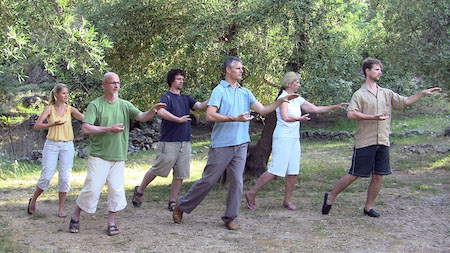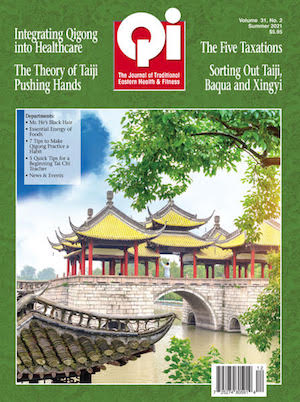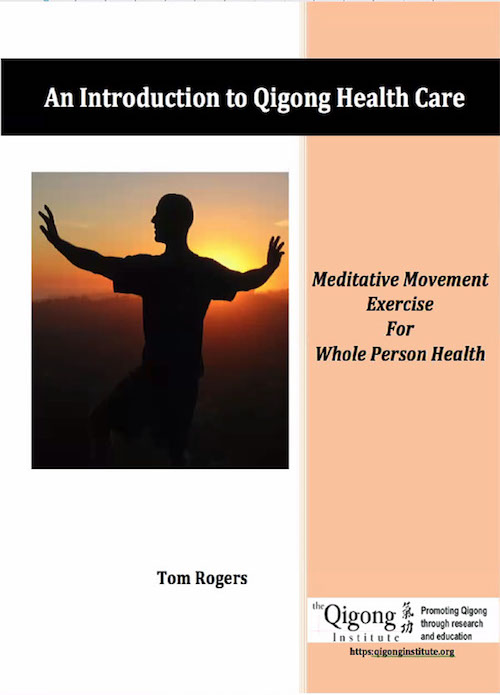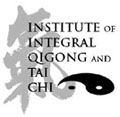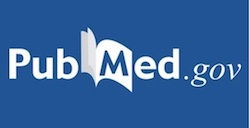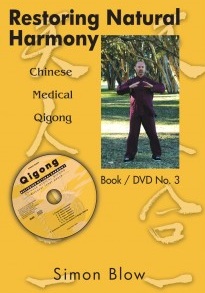Qigong as Medicine
All Qigong can be called medical because the practice of it directly benefits health and body function. Although ancient in origin, Qigong is a new category of exercise called Meditative Movement (or what Harvard Medical School calls "moving medication") which combines movement, breathing, and awareness. Qigong's diaphragmatic breathing and mental focus encourage health, growth, restoration, digestion, and vitality mainly through modulation of the autonomic nervous system. Qigong helps with a variety of health issues, including quality of life, inflammation and immune function, psychological symptoms, and cardiovascular disorders, to name a few. From a physiological standpoint, Qigong practice puts the body into a state of relaxation and regeneration. This state is achieved by eliciting the relaxation response, coined by Dr. Herbert Benson, Associate Professor of Medicine at The Harvard Medical School to describe the healing and stress reducing effects of a mind-body practice.
Trends in Yoga, Tai Chi, and Qigong Use Among US Adults, 2002-2017. PMC6459666.
 "Although not proven conclusively from a Western Medical stand point, Qigong is an accepted treatment option in the fields of complementary and alternative medicine. Qigong treatment is also used extensively in China as part of Traditional Chinese Medicine and has been included in the curriculum of Chinese universities. Qigong practice serves both a preventive and curative function. It is considered to be effective in improving the effects of many chronic conditions such as hypertension, diabetes, allergy, asthma, arthritis, degenerative disk disease, cancer, depression, anxiety and addiction. Qigong works by improving the practitioners’ immunity response, increasing a person’s self-healing and self-recovery capabilities and enhancing one’s self-regeneration potential...." More from Lee Holden: Qi Gong For Self-Healing.
"Although not proven conclusively from a Western Medical stand point, Qigong is an accepted treatment option in the fields of complementary and alternative medicine. Qigong treatment is also used extensively in China as part of Traditional Chinese Medicine and has been included in the curriculum of Chinese universities. Qigong practice serves both a preventive and curative function. It is considered to be effective in improving the effects of many chronic conditions such as hypertension, diabetes, allergy, asthma, arthritis, degenerative disk disease, cancer, depression, anxiety and addiction. Qigong works by improving the practitioners’ immunity response, increasing a person’s self-healing and self-recovery capabilities and enhancing one’s self-regeneration potential...." More from Lee Holden: Qi Gong For Self-Healing.
Some Chinese research has found that the curative effect of Chinese-Western medicine and Qigong therapy is superior to just Qigong therapy or just Chinese-Western therapies. This combination of medical paradigms and practices forms the basis of Integrative Medicine which incorporates the best practices of Traditional Chinese Medicine, Western Medicine, and Qigong therapy. Examples are practicing Qigong during cancer recovery after a course of chemotherapy to improve quality of life, or the proven ability of Qigong to reduce the amount of prescription drugs required for treatment, or the combination of Qigong and the drugs was superior to the drugs alone.
Discoveries in Alternative Medicine, Effie Chow. PBS documentary on Effie Chow, qigong master and alternative medicine healer.
Tai Chi & Qigong as Modern Healthcare. A step-by-step instruction into how to expand Tai Chi & Qigong into Mainstream Healthcare from Bill Douglas, founder of World Tai Chi and Qi Gong Day and the author of The Complete Idiots Guide to Tai Chi & Qi Gong.
Seated Taiji and Qigong: Guided Therapeutic Exercises to Manage Stress and Balance Mind, Body and Spirit .
.
Medical Qigong Textbook
The Introduction to the English Edition of Chinese Medical Qigong gives some more background on Qigong and its use as a clinical therapy.
gives some more background on Qigong and its use as a clinical therapy.
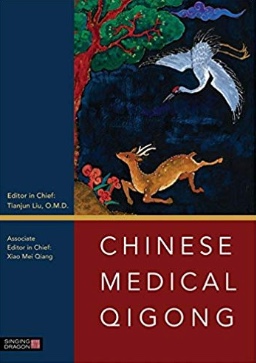
Chinese Medical Qigong
Chinese Medical Qigong, known as Qigong Study in Chinese Medicine in China, is the third edition of the only official textbook of medical Qigong used in colleges and universities of traditional Chinese medicine (TCM) in China.


 "Although not proven conclusively from a Western Medical stand point, Qigong is an accepted treatment option in the fields of complementary and alternative medicine. Qigong treatment is also used extensively in China as part of Traditional Chinese Medicine and has been included in the curriculum of Chinese universities. Qigong practice serves both a preventive and curative function. It is considered to be effective in improving the effects of many chronic conditions such as hypertension, diabetes, allergy, asthma, arthritis, degenerative disk disease, cancer, depression, anxiety and addiction. Qigong works by improving the practitioners’ immunity response, increasing a person’s self-healing and self-recovery capabilities and enhancing one’s self-regeneration potential...." More from Lee Holden:
"Although not proven conclusively from a Western Medical stand point, Qigong is an accepted treatment option in the fields of complementary and alternative medicine. Qigong treatment is also used extensively in China as part of Traditional Chinese Medicine and has been included in the curriculum of Chinese universities. Qigong practice serves both a preventive and curative function. It is considered to be effective in improving the effects of many chronic conditions such as hypertension, diabetes, allergy, asthma, arthritis, degenerative disk disease, cancer, depression, anxiety and addiction. Qigong works by improving the practitioners’ immunity response, increasing a person’s self-healing and self-recovery capabilities and enhancing one’s self-regeneration potential...." More from Lee Holden: 

